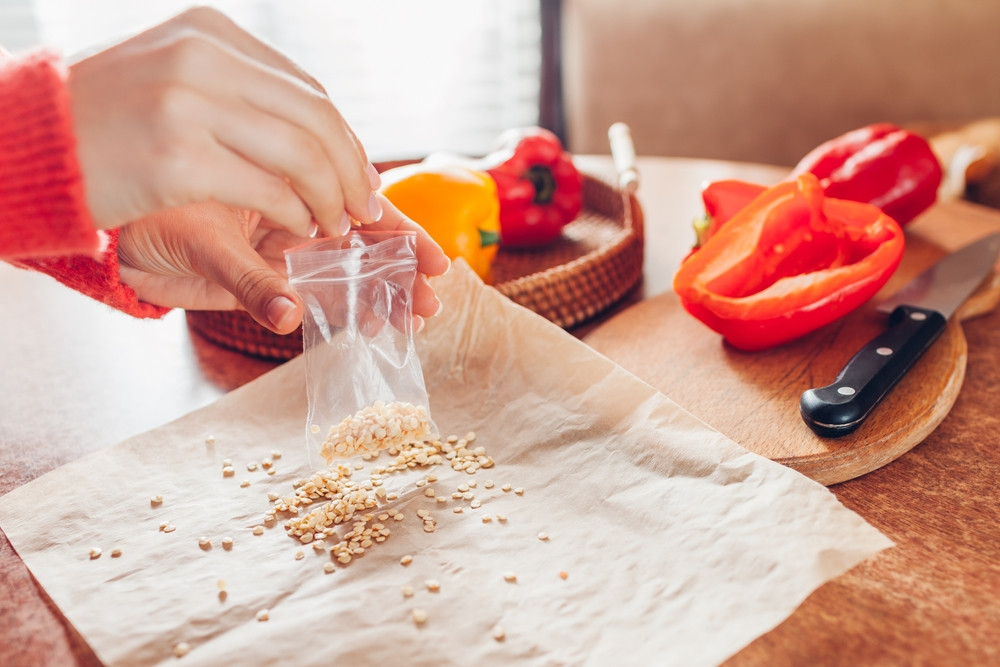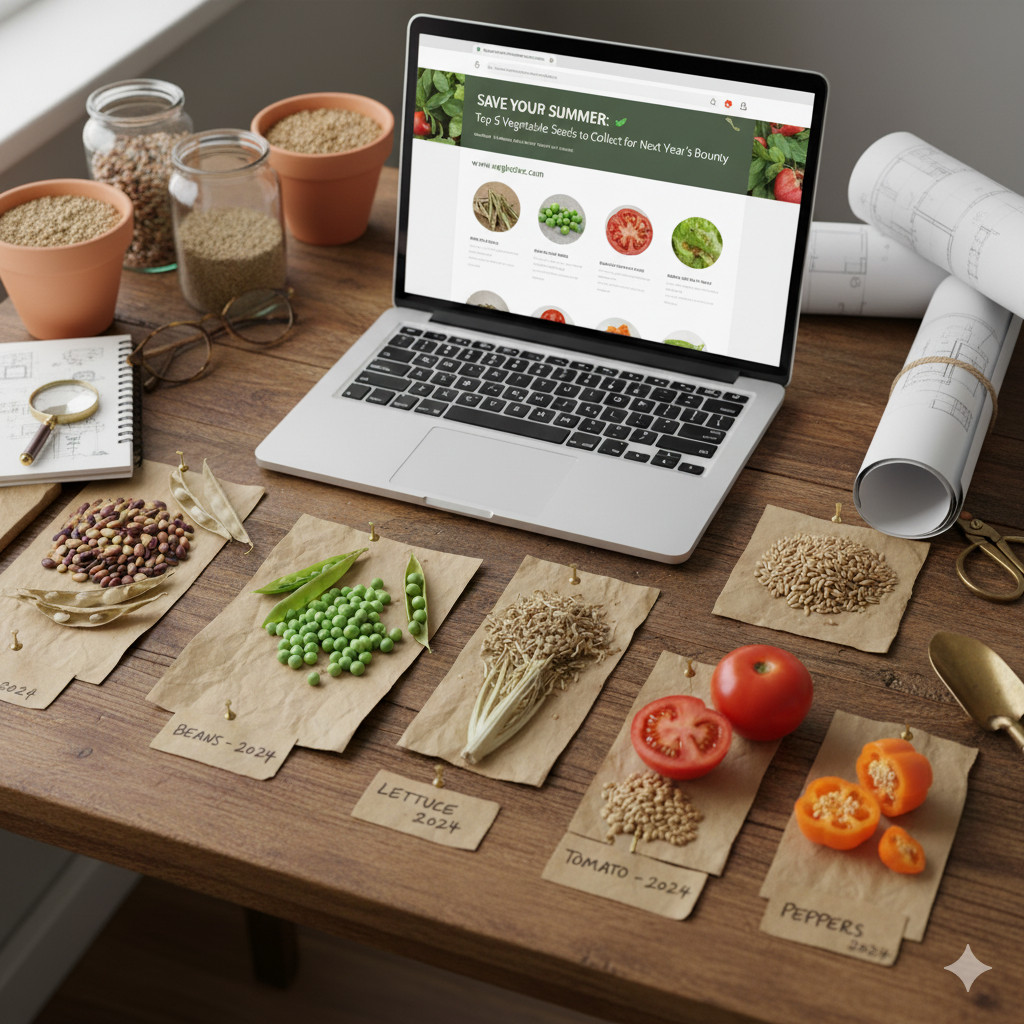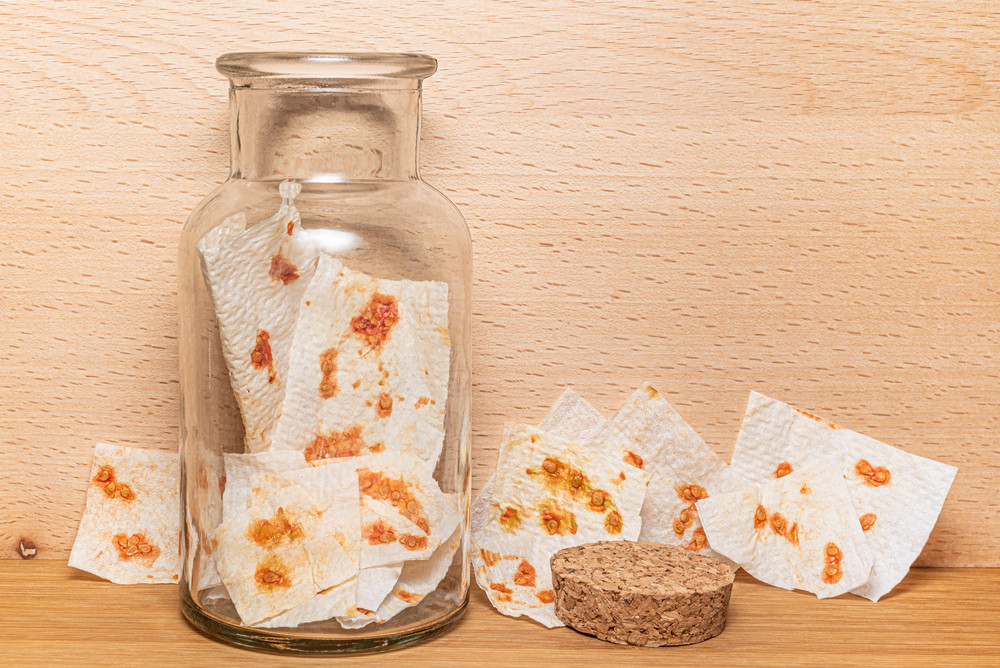Save Your Summer: Top 5 Seeds to Collect

As summer winds down, don't just clear your garden – plan for next year's harvest by saving seeds from your best plants. Seed saving is a direct way to grow your favorite varieties again, connecting you to your garden's cycle.
Not all vegetables are ideal for home seed saving. Some cross-pollinate easily, making their offspring unpredictable, or don't produce viable seeds. However, many are straightforward and rewarding. Here are our top 5 picks for easy vegetable seeds to save from your summer garden :
1. Beans (Phaseolus vulgaris)
Beans are excellent for seed saving. They are self-pollinating, so they rarely cross with other bean varieties if planted a few feet apart.
How to Save: Let bean pods dry completely on the plant until they are brittle and change color. You should hear the seeds rattle inside. Pick the dry pods, shell them, and spread the beans out for a few days to ensure they are fully dry before storage.

2. Peas (Pisum sativum)
Like beans, peas are easy to save. They are also self-pollinating and have a low chance of crossing with other varieties.
How to Save: Leave pea pods on the vine until they are dry, hard, and turn a pale yellow or brown. Once completely dry, shell the peas and spread them on a tray in a well-ventilated area for several days to remove any remaining moisture.
3. Lettuce (Lactuca sativa)
To save lettuce seeds, you need to let the plant "bolt" (go to seed). Lettuce is mostly self-pollinating. While some varieties can cross, the resulting plants are usually still good for eating.
How to Save: Select a healthy lettuce plant and let it grow a tall flower stalk. Small, yellow, dandelion-like flowers will appear, eventually forming fluffy seed heads. When the fluff develops and the seeds beneath are dry and black (or white, depending on the variety), gently rub the seed heads over a bowl to collect them. You can also cut the whole stalk and hang it upside down to catch falling seeds.
4. Tomatoes (Solanum lycopersicum)
Tomatoes are popular for seed saving. Most open-pollinated (non-hybrid) varieties produce seeds that grow into plants identical to the parent. Fermentation helps remove germination inhibitors and reduce seed-borne diseases.
How to Save: Choose ripe, healthy tomatoes. Scoop out the seeds and pulp into a small jar. Add a little water if needed and cover loosely. Let it sit at room temperature for 2-3 days, stirring daily, until mold forms on top. This process separates viable seeds. Pour off the moldy liquid, rinse the seeds thoroughly in a sieve, then spread them on a non-stick surface (like a plate or parchment paper) to dry completely for about a week.

5. Peppers (Capsicum annuum)
Both sweet and hot peppers are relatively simple to save seeds from. Peppers can cross-pollinate, but this is less likely if different varieties are planted a reasonable distance apart. For specific varieties, consider isolating the plants.
How to Save: Use fully ripe, healthy peppers. Cut them open and carefully scrape out the seeds. Spread the seeds on a plate or paper towel in a warm, dry, well-ventilated area out of direct sunlight. Allow them to dry completely for at least 2-3 weeks, until they snap when bent.
Storing Your Seeds
Once thoroughly dry, store your seeds in airtight containers (glass jars or small zip-top bags) in a cool, dark, and dry place. Label each container with the variety and date saved. Properly stored, many seeds will remain viable for several years, ensuring future harvests.
As every garden planner knows seed saving is a sustainable, economical, and satisfying way to keep your garden productive year after year.


